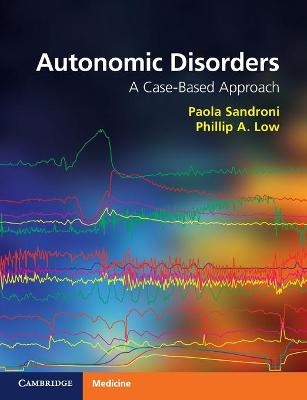
Autonomic Disorders
Cambridge University Press (Verlag)
978-1-107-40044-3 (ISBN)
Clinical case studies have long been recognized as a useful adjunct to problem-based learning and continuing professional development. They emphasize the need for clinical reasoning, integrative thinking, problem-solving, communication, teamwork and self-directed learning – all desirable generic skills for health care professionals. This book is based on the unique autonomic program at the Mayo Clinic, comprising an autonomic laboratory that studies over 4000 patients annually. The authors teach using actual patient material and laboratory recordings to clarify complex autonomic syndromes. Important and common disorders like neurogenic orthostatic hypotension and distal small fiber neuropathy are described in some detail. There are also fascinating uncommon autonomic syndromes described succinctly and clearly. Emphasis is given to clarifying what is real and highlighting those changes that mimic autonomic dysfunction. Providing a broad breadth of coverage with many clinical examples, the book will be of interest to residents and non-specialist practitioners in neurology and cardiology.
Paola Sandroni is Professor of Neurology, Mayo Medical School and Head of the Mayo Autonomic Laboratory, Mayo Clinic, Rochester, MN, USA. Phillip A. Low is the Robert D. and Patricia E. Kern Professor of Neurology, Mayo Medical School and previous Chair, Division of Clinical Neurophysiology, Department of Neurology, Mayo Clinic, Rochester, Minnesota. He founded the Mayo Autonomic Laboratory in 1983 and pioneered clinical autonomic testing.
Preface; Introduction; Case 1. Probable Lewy body disease; Case 2. Multiple system atrophy: cerebellar type; Case 3. Multiple system atrophy: predominantly parkinsonism; Case 4. Multiple system atrophy: predominantly parkinsonism; Case 5. Pure autonomic failure; Case 6. Pure autonomic failure; Case 7. Acute autonomic ganglionopathy; Case 8. Acute autonomic ganglionopathy; Case 9. Acute autonomic ganglionopathy; Case 10. Acute autonomic ganglionopathy; Case 11. Chronic idiopathic anhidrosis; Case 12. Pseudo chronic idiopathic anhidrosis; Case 13. Amyloidosis; Case 14. Amyloidosis; Case 15. Leprosy; Case 16. Dopamine: beta-hydrogenase deficiency; Case 17. Hereditary sensory and autonomic neuropathy type I; Case 18. Postural orthostatic tachycardia syndrome with hyperadrenergic storms; Case 19. Postural orthostatic tachycardia syndrome; Case 20. Brainstem dysfunction; Case 21. Baroreflex dysfunction; Case 22. Diabetic neuropathy; Case 23. Severe diabetic autonomic neuropathy; Case 24. Complex regional pain syndrome; Case 25. Pseudo-autoimmune autonomic ganglionopathy (median arcuate ligament syndrome); Case 26. Erythromelalgia; Case 27. Hypothalamic dysfunction; Case 28. Pheochromocytoma; Case 29. Syncope; Case 30. Harlequin's syndrome; Case 31. Ross' syndrome; Case 32. Autoimmune encephalopathy with autonomic manifestations; Vignettes; Index.
| Erscheint lt. Verlag | 13.8.2015 |
|---|---|
| Zusatzinfo | 2 Halftones, unspecified; 27 Halftones, color; 15 Line drawings, unspecified; 310 Line drawings, color |
| Verlagsort | Cambridge |
| Sprache | englisch |
| Maße | 189 x 246 mm |
| Gewicht | 440 g |
| Themenwelt | Medizinische Fachgebiete ► Innere Medizin ► Kardiologie / Angiologie |
| Medizin / Pharmazie ► Medizinische Fachgebiete ► Neurologie | |
| ISBN-10 | 1-107-40044-9 / 1107400449 |
| ISBN-13 | 978-1-107-40044-3 / 9781107400443 |
| Zustand | Neuware |
| Haben Sie eine Frage zum Produkt? |
aus dem Bereich


